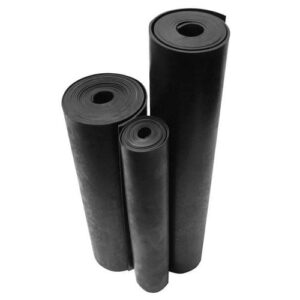Description
Buy Conveyor belt ≠ 10 mm, 1100 mm (4 cords) from ChemLV at a bargain price in Latvia and the European Union
Purpose Conveyor belt ≠ 10 mm, 1100 mm (4 cords) – Transport belt | Conveyor belt | Shipping tape |
Applicable – Product packaging | Cargo transportation | Transportation equipment | Production | Production lines
Description Conveyor belt ≠ 10 mm, 1100 mm (4 cords)
Conveyor belts are the main element of conveyors.
The purpose of conveyor belts is to move goods over a given distance by transferring emerging traction forces. (that’s why these belts are often called conveyor belts)
The design of almost all types of tapes consists of:
– traction core, which serves as the basis of the conveyor belt and bears the main traction load.
– working and non-working lining, acting as protective elements.
– rubber boards to prevent delamination of the tapes.
At the heart of the activity of any industrial enterprise is the automation of production cycles. Acting as an objective indicator of the development of technological progress. Labor productivity directly depends on the coherence and consistency of all units involved in the technological process. Conveyor equipment is an essential component of most industrial enterprises. Used in a wide variety of sectors of the national economy. As well as production for the transportation of raw materials, semi-finished products and final products.
Conveyor belts are the working body of belt transporters and conveyors. It is a load-carrying mobile canvas made of high-strength rubber grades. Among other things, the tape plays the role of a tension device, therefore it is designed to differ not only in tensile strength, but also in the ability to resist friction, stretching and other external constant and variable loads.
Structurally, a conveyor belt, also known as a transportation belt, consists of three main components – a traction core, a protective lining and rubber boards. Each of the structural parts performs its function and is present in canvases for any purpose. The traction core is a load-bearing element that provides traction, the upper and lower lining protects the mechanism from accidental damage, the sides serve as protection against material delamination.
Application
In order to avoid emergency situations, conveyor belts are selected based on the operating conditions of the equipment. As well as the type of transported goods. Depending on the functional purpose, several types of rubber fabric sheets are produced – classic (general purpose), food, mine, heat-resistant, frost-resistant, flame-retardant (normal and frost-resistant), oil and petrol resistant.
The nature of the conveyor application also affects the selection of belt design features – the thickness of the facings varies. The principle of their location (on one or two sides). And also, the material performance of the sides and other elements. In addition, the surface of the conveyor belt can be smooth or embossed, and the choice of one or another type of coating is determined by the properties of the transported cargo and the angle of inclination of the equipment.
With the help of rubber fabric sheets, bulk, granular and lumpy substances, packaged and other packaged products are moved to various distances in the production cycle. Given the circumstances of the use of equipment, conveyor belts are available in three versions. For heavy, medium and light operating conditions.







